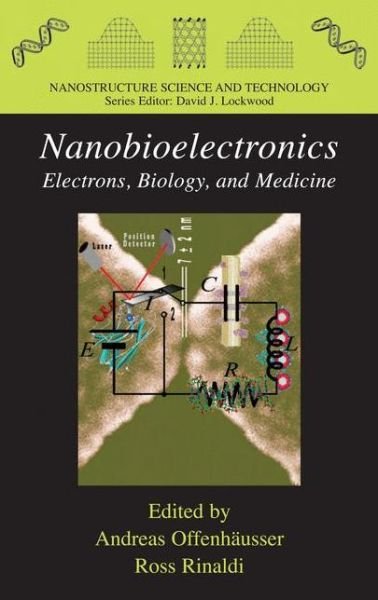
Fortæl dine venner om denne vare:
Nanobioelectronics - for Electronics, Biology, and Medicine - Nanostructure Science and Technology 2009 edition
Andreas Offenhausser
Bestilles fra fjernlager
Nanobioelectronics - for Electronics, Biology, and Medicine - Nanostructure Science and Technology 2009 edition
Andreas Offenhausser
The combination of biological elements with electronics is of great interest for many research areas. Even though at the frontier of life science and material science, bioelectronics has achieved in the last years many objectives of scientific and industrial relevance, including aspects of electronics and biotechnology.
Marc Notes: Includes bibliographical references and index. Jacket Description/Back: The different aspects of bioelectronics reviewed in this book emphasize the immense developments in the field of bioelectronics and nano-bioelectronics. The range of themes addressed emphasize key aspects and the future perspectives of nano-bioelectronics. The book discusses the electronic coupling of DNA and proteins with electronic devices to build new information systems and to apply the systems as biosensors. The exploitation of networks of neurons connected with electronic devices in future information processing systems and the use of nano-objects to assess cellular function is also discussed in detail. The various topics addressed in this book will be of interest to physicists, chemists, biologists, material scientists and engineers, as well as attract young researchers and introduce them to the field with an enormous collection of literature references. Table of Contents: DNA-Based Nanobioelectronics.- DNA-Mediated Assembly of Metal Nanoparticles: Fabrication, Structural Features, and Electrical Properties.- DNA-Based Nanoelectronics.- DNA Detection with Metallic Nanoparticles.- Label-Free, Fully Electronic Detection of DNA with a Field-Effect Transistor Array.- Protein-Based Nanobioelectronics.- Nanoelectronic Devices Based on Proteins.- S-Layer Proteins for Assembling Ordered Nanoparticle Arrays.- Electrochemical Biosensing of Redox Proteins and Enzymes.- Ion Channels in Tethered Bilayer Lipid Membranes on Au Electrodes.- Fluorescent Nanocrystals and Proteins.- Cell-Based Nanobioelectronics.- Spontaneous and Synchronous Firing Activity in Solitary Microcultures of Cortical Neurons on Chemically Patterned Multielectrode Arrays.- Nanomaterials for Neural Interfaces: Emerging New Function and Potential Applications.- Interfacing Neurons and Silicon-Based Devices.- Hybrid Nanoparticles for Cellular Applications. Publisher Marketing: The combination of biological elements with electronics is of great interest for many research areas. Inspired by biological signal processes, scientists and engineers are exploring ways of manipulating, assembling, and applying biomolecules and cells on integrated circuits, joining biology with electronic devices. The overall goal is to create bioelectronic devices for biosensing, drug discovery, and curing diseases, but also to build new electronic systems based on biologically inspired concepts. This research area called bioelectronics requires a broad interdisciplinary and transdisciplinary approach to biology and material science. Even though at the frontier of life science and material science, bioelectronics has achieved in the last years many objectives of scientific and industrial relevance, including aspects of electronics and biotechnology. Although the first steps in this field combined biological and electronic units for sensor applications (e. g., glucose oxidase on an oxygen electrode), we see now many applications in the fields of genomics, proteomics, and celomics as well as electronics. This approach challenges both the researcher and the student to learn and think outside of their zones of comfort and training. Today, one can fabricate electrically active structures that are commensurate in size with biomolecules. The advancement of nanotechnology has influenced bioelectronics to a large extent.
| Medie | Bøger Hardcover bog (Bog med hård ryg og stift omslag) |
| Udgivet | 6. februar 2009 |
| ISBN13 | 9780387094588 |
| Forlag | Springer-Verlag New York Inc. |
| Genre | Aspects (Academic) > Biotechnology Aspects |
| Antal sider | 338 |
| Mål | 155 × 235 × 20 mm · 666 g |
| Sprog | Engelsk |
| Klipper/redaktør | Offenhausser, Andreas |
| Klipper/redaktør | Rinaldi, Ross |
Se alt med Andreas Offenhausser ( f.eks. Hardcover bog )

